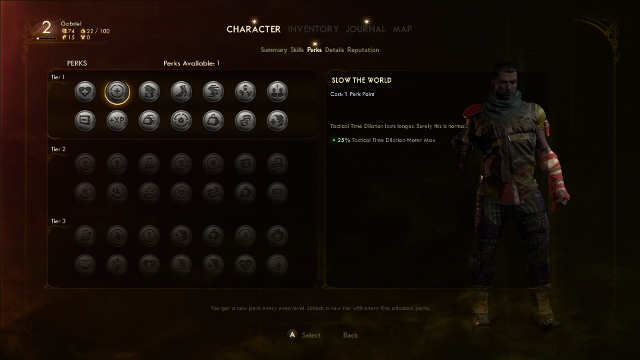If you’re a fan of similar hybrid RPG/shooters like Fallout, you might be used to using V.A.T.S. to target enemies in combat. There is no such thing as Vault-Tec or V.A.T.S. in developer Obsidian’s The Outer Worlds, so you’ll have to make do with something else. Luckily, the new Tactical Time Dilation (TTD) system works well in a pinch.
In the strategy guide below, we go over what TTD is in The Outer Worlds, as well as why you would use it, how to use it (including controls for console and PC), and what affects it has on the character sheet.
What is Tactical Time Dilation in The Outer Worlds?
In The Outer Worlds, you’ve been rudely awoken from cryosleep and shot headfirst onto the surface of a nearby planet. Naturally, your time perception is ever so slightly off. There’s nothing to worry about though. You can actually speed your senses up and slow time down on the fly with your newly discovered Tactical Time Dilation ability.
Why Would You Use Tactical Time Dilation in The Outer Worlds?
TTD slows time down, making the combat systems much more manageable for those who aren’t as savvy with first-person shooting mechanics. The Tactical Time Dilation scanner tells you information about an enemy, including its health, strengths, weaknesses, faction affiliations (if any), and preferred tactics.
How Do You Use Tactical Time Dilation?
Tactical Time Dilation activates whenever you press
- “L1” on PS4
- “RB” on Xbox One
- “Q” on PC
When activated, TTD feeds from a rechargeable resource pool which runs down for as long as TTD remains active. This pool is represented by a blue bar underneath the health bar. Note that when standing still, your Tactical Time Dilation resource pool depletes much slower than when you are moving and attacking.
What Affects Tactical Time Dilation in the Character Sheet?
TTD is influenced by certain base Attributes, Skills, and Perks. Choosing Below Average Strength in the character creation menu automatically halves the amount of time it takes to completely deplete your TTD resource pool while moving.
Moreover, reaching 20 on your Ranged Weapon skills and 40 on your Melee Weapon skills unlocks TTD Location Hit Effects. These Hit Effects are unique to each area on an enemy’s body; meaning you can land headshots and cripple limbs as long as your weapon’s skill matches the bare minimum for Location Hit Effects to activate.
Many of the big benefits to the Tactical Time Dilation system are hidden behind perks. Slow The World is a perk that you can take early on, which sharply increases the amount of time you can stay in TTD mode before needing to recharge.
—
This wraps up our guide of Tactical Time Dilation in The Outer Worlds. Be sure to check back for more guides on The Outer Worlds as we make our way through the game.
The Outer Worlds is out now on PC, Xbox One, and PS4, bringing first-person role-playing back to form in an out-of-this-world package. While you wait on our official review, see what we had to say about the game from our E3 preview.
- How to Complete the Quest: Finding Zoe
- How to Complete the Quest: The Frightened Engineer
- How to Complete the Quest: The Illustrated Manual
- How to Find the Logic Core in “Die Robot”
- How to Find the Shrink Ray Gun
- How to Change FOV
- How to Fix Screen Blur







Published: Oct 26, 2019 09:54 am